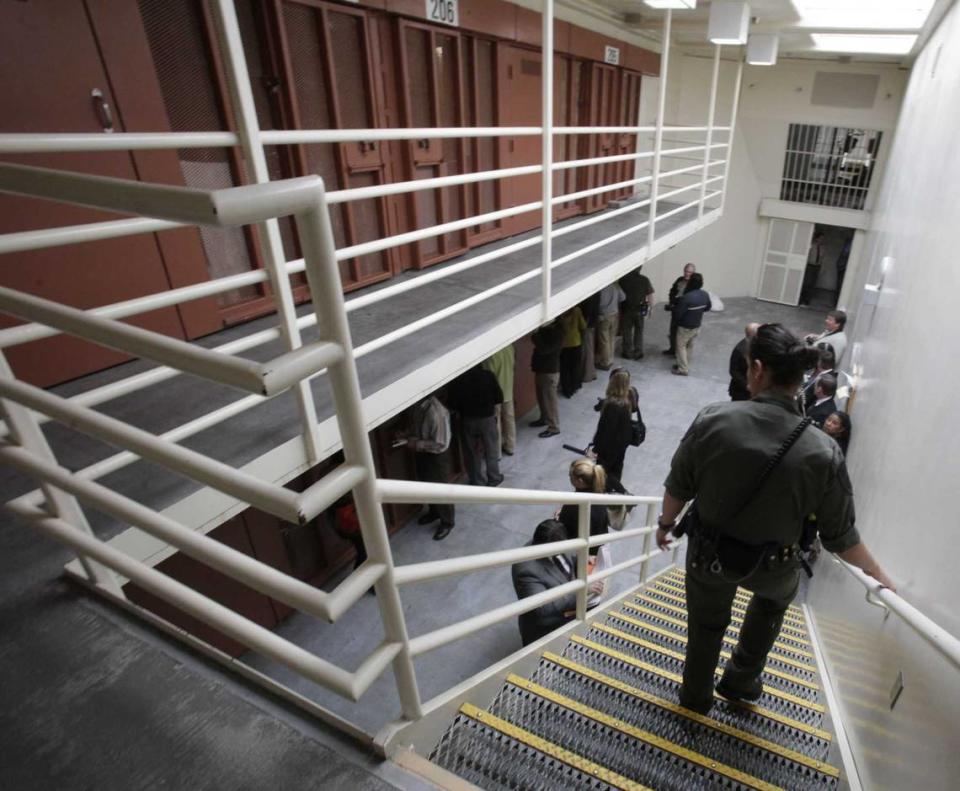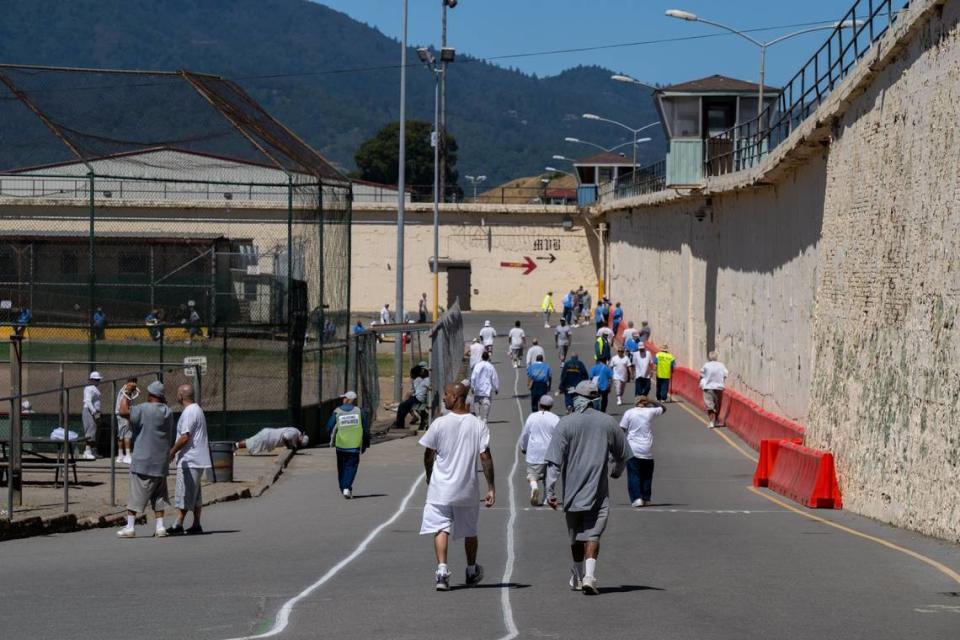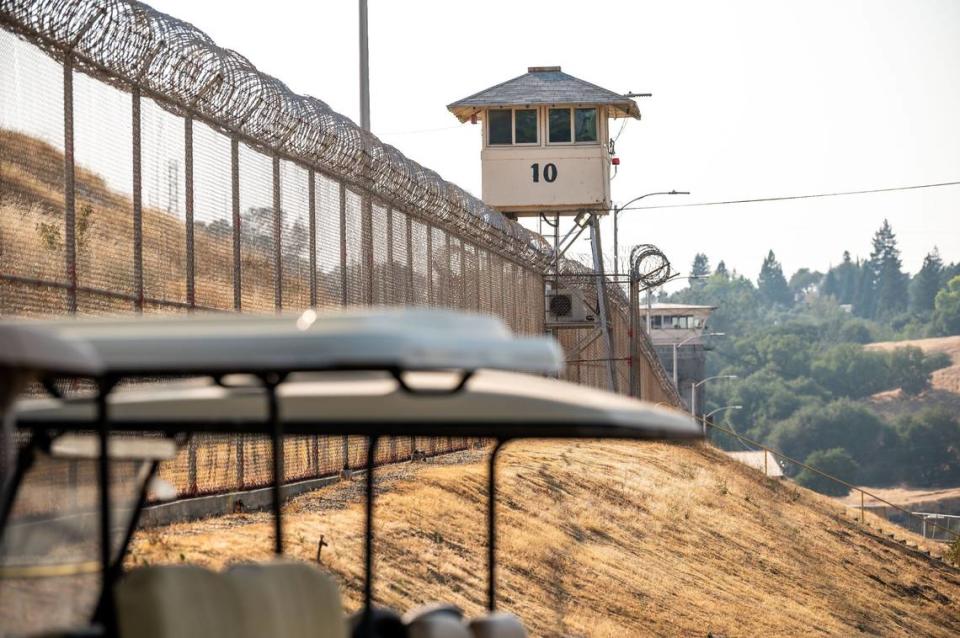Gavin Newsom rushes solitary confinement changes. They could make reforms an ‘uphill battle’
- Oops!Something went wrong.Please try again later.
California Gov. Gavin Newsom’s administration is expediting changes to the state’s solitary confinement rules, a move advocates say is superficial and could hurt efforts to pass more ambitious legislation reforming the practice.
The California Department of Corrections and Rehabilitation on Oct. 5 announced new emergency regulations covering the use of what was previously described as “segregated confinement” and is now termed “restricted housing.”
Inmates living in these settings are isolated from the general population and typically have limited contact with other people. Prisoners are placed in solitary confinement for a variety of reasons, including discipline, threats to others and protective custody.
There are currently few restrictions on the practice in California correctional facilities, and inmates can remain in solitary confinement for decades.
CDCR’s new regulations would give solitary inmates up to 20 hours of outside cell time per week, up from the 10 hours they are currently allowed. They would limit the offenses that would lead to solitary to those involving violence or threats, and they would halve the amount of isolation time for prisoners who commit those offenses.
The changes would also allow inmates in solitary to earn credits and shave time off their isolation period, as well as provide some additional rehabilitative programming.

Legislative solitary confinement reform
The reforms are a response to attempts by Assemblyman Chris Holden, D-Pasadena, to restrict the state’s use of solitary confinement. Holden authored bills in 2022 and this year that would have prohibited prisons, jails and immigrant detention facilities from isolating inmates for more than 15 consecutive days in most cases.
His legislation also would have prevented involuntary isolation of pregnant people, prisoners age 25 and older and 60 and older and those with developmental disabilities or serious mental disorders.
Newsom vetoed Assembly Bill 2632 in 2022, calling it “overly broad” and saying it did not contain exceptions allowing officials to use solitary confinement to ensure prison safety.
But the governor did call the practice “ripe for reform” and directed CDCR to find ways to restrict its use.
Holden in September held his second attempt, Assembly Bill 280, in the Assembly as a two-year bill, saying he wanted to wait and gauge “the administration’s thinking around this issue.”
CDCR does not use the common term “solitary confinement” to describe prisoner isolation. Under the “frequently asked questions” section of its restricted housing webpage, the agency says it does not employ the practice. However, this is at odds with the international understanding of solitary.
The United Nations Standard Minimum Rules for the Treatment of Prisoners defines solitary confinement as “the confinement of prisoners for 22 hours or more a day without meaningful human contact.” Those who spend more than 15 consecutive days in this setting are in “prolonged solitary confinement,” which is considered torture.
Holden’s AB 280 defines the practice as confinement for more than 17 hours per day, “determined by time spent in a cell and contact with persons other custodial staff.”

An ‘uphill battle’ to make changes
The revisions CDCR is rushing through the system are modest in scope compared to the changes Holden and advocates are pursuing. They also lessen the chances that more sweeping legislation can be passed and signed into law by Newsom.
CDCR wants to enact the regulatory changes by Nov. 1 through an emergency rule-making provision that allows public comment only until Oct. 14. Terri Hardy, a CDCR spokeswoman, said in a statement the regulations are temporary, and the agency plans to go through a permanent rule-making process with at least 45 days for public comment in the future.
But Holden said the initial tight timeline gives stakeholders little time to process the changes and “seems to shorten the window or close the window on the time of being able to have the fullness of conversation based on the best understanding.”
He plans to have discussions with CDCR and the Newsom administration, and his goal is to “try to get some sense of how far we can maybe agree to be a little bit more aggressive and how the standards are reflected.”
Holden called the situation an “uphill battle.”
“It’s uphill because it’s so far away from the bill,” he said of the regulations. “The bill is the same bill as last year, it’s nothing new. So it’s not as though they took the elements of what we were trying to do last year and this year and integrated them in.”
Izzy Gardon, a Newsom spokesman, directed The Sacramento Bee to the governor’s 2022 veto message and declined to comment on the emergency nature of the regulations and their effect on Holden’s bill.

Advocates unhappy with changes
Criminal justice reform advocates and those who experienced solitary confinement are not impressed by the new regulations.
Hamid Yazdan Panah, advocacy director for Immigrant Defense Advocates, called the changes “window dressing.”
“They can call it whatever they want to call it,” Panah said. “They can do the window dressing that they want. But it is solitary confinement, and these regulations are just that. They’re reforms meant to try to improve the image of CDCR without actually setting very clear standards that are met, like the health and safety and mental well-being of people inside. And that’s what we’re looking for.”
Jack Morris, a former prison inmate who spent decades in solitary confinement in various California facilities, thinks the new regulations sound like an improvement, but “implementation is totally different.”
“We know as a result of history that the best-laid plans don’t seem to become realities inside the Department of Corrections,” Morris said.
He said internal political struggles can influence prison operations, prompting the shutdown of programs at any given time at different facilities.
And for those in solitary, Morris said, being outside their cells still frequently means exercising in a small yard fenced in by chicken wire or having therapy sessions through a cage-like structure.
“Prison is a harsh place,” Morris said. “Yes, we understand. You can’t have all these things for prisoners, because prisoners violated the laws of California, and therefore they were sentenced to prison.”
“But that should be their punishment,” he added. “Being removed from the community and placed in prison, not additional hardships while in prison. Because prison is designed for the purposes of allowing you to rehabilitate so they can be let back into the community.”

